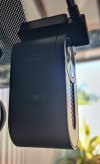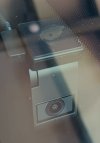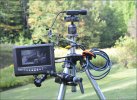Agie
Well-Known Member
- Joined
- Aug 19, 2016
- Messages
- 1,775
- Reaction score
- 881
- Location
- Perth, Australia
- Country
- Australia
- Dash Cam
- 70mai S500, A229 Pro, VS1, Nexus 4 Pro, S1 Pro, A119 v3v2v1
After having released their previous Sony Starvis 2 IMX675 solution in the A119 Mini 2, Viofo is back at it again with the VS1 in an even smaller form factor! It begs the question though, do we really need a screen on a dash camera? Let's investigate (special thank you to @viofo and @VIOFO-Support).
Viofo VS1 (Novatek NT96565, Sony Starvis 2 IMX675) Review


-----------------------------------------------------
Firmware: V1.0_240105. These were the firmware versions loaded onto the device from the factory – I did not receive any further updates during the testing period.
App for testing: Android version 3.2.14, obtained from Google Play Store.
-----------------------------------------------------
The verdict:
When going about this review, I thought that no screen would be an issue for me, as I am used to screened solutions. Especially when there is the A119 Mini 2 in Viofo's own stables. Arguably, the A119 Mini 2 is the more mature solution having been on the market for a while now. But with the two very close in price, do you need a screen when the VS1 performs so well without one? I'd say no, considering how smooth the setup and operation process of the VS1 is.
Coming back to the video quality and overall package of the VS1, Viofo has once again knocked it out of the park. The packaging is better, the styling is better, the experience is better. Viofo continue to build upon their strengths, and provide the best dash cameras in the industry. You won't regret your purchase.
My nitpickings:
The positive:
Viofo VS1 (Novatek NT96565, Sony Starvis 2 IMX675) Review


-----------------------------------------------------
Firmware: V1.0_240105. These were the firmware versions loaded onto the device from the factory – I did not receive any further updates during the testing period.
App for testing: Android version 3.2.14, obtained from Google Play Store.
-----------------------------------------------------
The verdict:
When going about this review, I thought that no screen would be an issue for me, as I am used to screened solutions. Especially when there is the A119 Mini 2 in Viofo's own stables. Arguably, the A119 Mini 2 is the more mature solution having been on the market for a while now. But with the two very close in price, do you need a screen when the VS1 performs so well without one? I'd say no, considering how smooth the setup and operation process of the VS1 is.
Coming back to the video quality and overall package of the VS1, Viofo has once again knocked it out of the park. The packaging is better, the styling is better, the experience is better. Viofo continue to build upon their strengths, and provide the best dash cameras in the industry. You won't regret your purchase.
My nitpickings:
- Niggly firmware bugs (black screen issues / Wi-Fi button not engaging toggle behaviour correctly / random beeps when using app)
- CPL filter, when? (EDIT: coming soon according to Viofo, would have liked it at launch though)
- Sorry Viofo, where is the volume control for spoken voice notifications?
The positive:
- Video quality is absolutely fantastic in all lighting conditions, with Viofo again pushing the high bitrates to extract the maximum out of these Starvis 2 image sensors
- Absolutely TINY unit, easy to install and remains almost hidden in plain sight. Loving the tilt capability to adjust the position of the camera
- The new packaging from Viofo is sleek and minimalist, and a great move by including a microSD card in the box
- Just as many dash cam settings as Viofo's bigger brothers & parking mode works well with the Viofo HK-5 USB-C hardwiring kit
- Heat dissipation solution working on-point, as the VS1 performs well even in high temperatures
Last edited:

